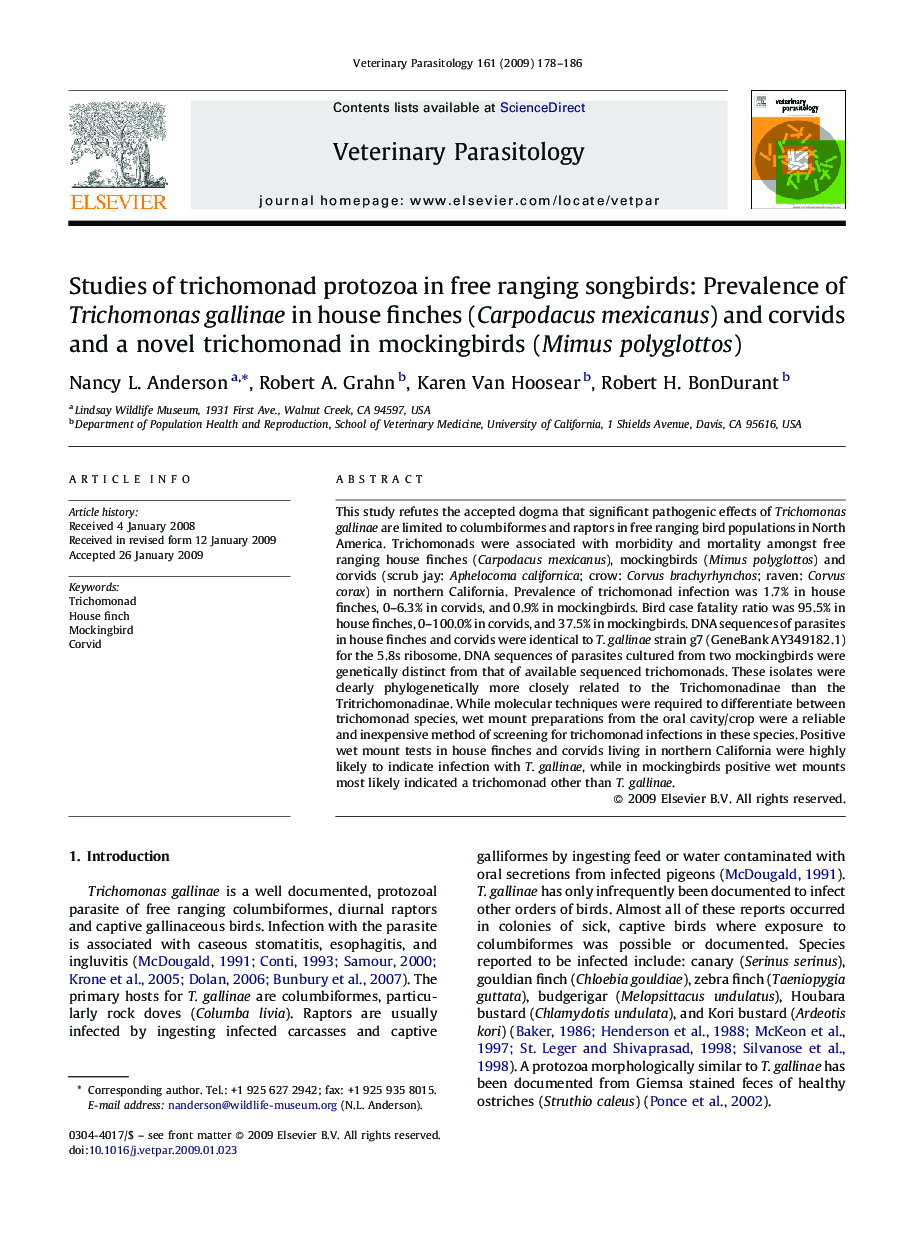| کد مقاله | کد نشریه | سال انتشار | مقاله انگلیسی | نسخه تمام متن |
|---|---|---|---|---|
| 2471134 | 1555755 | 2009 | 9 صفحه PDF | دانلود رایگان |

This study refutes the accepted dogma that significant pathogenic effects of Trichomonas gallinae are limited to columbiformes and raptors in free ranging bird populations in North America. Trichomonads were associated with morbidity and mortality amongst free ranging house finches (Carpodacus mexicanus), mockingbirds (Mimus polyglottos) and corvids (scrub jay: Aphelocoma californica; crow: Corvus brachyrhynchos; raven: Corvus corax) in northern California. Prevalence of trichomonad infection was 1.7% in house finches, 0–6.3% in corvids, and 0.9% in mockingbirds. Bird case fatality ratio was 95.5% in house finches, 0–100.0% in corvids, and 37.5% in mockingbirds. DNA sequences of parasites in house finches and corvids were identical to T. gallinae strain g7 (GeneBank AY349182.1) for the 5.8s ribosome. DNA sequences of parasites cultured from two mockingbirds were genetically distinct from that of available sequenced trichomonads. These isolates were clearly phylogenetically more closely related to the Trichomonadinae than the Tritrichomonadinae. While molecular techniques were required to differentiate between trichomonad species, wet mount preparations from the oral cavity/crop were a reliable and inexpensive method of screening for trichomonad infections in these species. Positive wet mount tests in house finches and corvids living in northern California were highly likely to indicate infection with T. gallinae, while in mockingbirds positive wet mounts most likely indicated a trichomonad other than T. gallinae.
Journal: Veterinary Parasitology - Volume 161, Issues 3–4, 12 May 2009, Pages 178–186